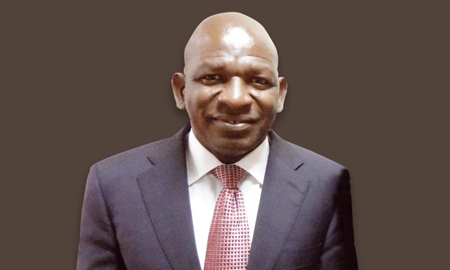When Robert Orya took over the helm of NEXIM (the Nigerian Export-Import Bank) in 2009, the bank was struggling under the weight of a considerable non-performing loans portfolio, and had strayed from its original mandate to help support Nigeria’s non-oil export economy. This situation came to a head with a crippling 2009 financial year loss of N4.2 billion ($26.6 million) for the bank.
After Mr Orya’s appointment, he immediately went about streamlining NEXIM’s activities, refocusing lending on non-oil sectors, implementing new risk management frameworks and instilling corporate governance structures throughout the institution. By the end of 2010, just a year later, NEXIM was showing profits of more than N216 million and was well on its way to fulfilling a new mission: to become the leading export-import bank in Africa by 2015.
In 2011, NEXIM was able to support exporters only to the tune of N10.14 billion and to grant risk-bearing facilities of N3.34 billion, while increasing efficiency in facility access. For 2012-2013, Mr Orya is targeting loans of N50 billion. By 2015, he wants to raise this to N94 billion.
“We were able to turn the bank around in 16 months. In the two and a half years I have been here, we have been able to support exporters with over N26 billion and also provide mixed bearing facilities of $32 million [N5 billion], which translates into the creation of 14,000 jobs. So our transformation is completely on track, primarily due to the professional staff we have managed to bring in, who are highly motivated, and we are hopeful of becoming the leading export-import (EXIM) bank in Africa by 2015,” says the managing director.
Mr Orya adds, “In carrying out our strategy, we first identified sectors where we believed a lot of jobs could be generated, as well as trade exchange, and where we could provide returns to our shareholders (the Central Bank of Nigeria and the Ministry of Finance.) This is key in order to have their support to become the biggest EXIM bank in Africa. So far, the journey has been successful, and we have given the government some proposals that have been received favourably and as soon as we get the green light, I believe we will be able to achieve great things.”
Through the bank’s Direct Lending Facility (DLF), NEXIM lends money directly to Nigerian exporters to help fund their purchases of capital goods, raw materials, packaging materials and spare parts.The DLF can also provide financing for infrastructure as well as the revitalisation and modernisation of exporters’ plants and machinery.
Now back in shape and functioning optimally, NEXIM is set to play a critical role in the diversification of Nigeria’s economy.
One of Mr Orya’s main objectives within the bank’s drive for economic diversification is to deepen sub-regional trade. To this end, a priority focus is NEXIM’s $61.5 million Sealink initiative that targets the creation of a shipping line that will boost trade within the Economic Community of West African States (ECOWAS).
“What we are trying to reverse in Nigeria is our exporters looking to the American and European markets where we cannot necessarily produce competitively. We looked at the position of Nigeria within ECOWAS and realised that the combined population was 300 million people, with Nigeria alone accounting for some 170 million. So why would our exporters want to go and compete in a market where they do not have a competitive advantage when we have a lot of potential in this region?” says Mr Orya.
Sealink is expected to boost maritime trade within the economic community by 300 per cent. The new shipping company will connect West and Central African ports with a fleet of 3,000 to 5,000-tonne ships that will greatly reduce goods shipment times, in addition to lowering the cost of business for regional companies.
“We cannot just hand out loans to exporters when we know that trade barriers exist. We need to address those barriers first. Right now, there is no efficient transport system to move goods within the region. There is no way to deepen trade without efficient cargo vessels. If we do not step in to address these issues, our exporters cannot get value for what they are doing,” concludes the managing director.

0 COMMENTS